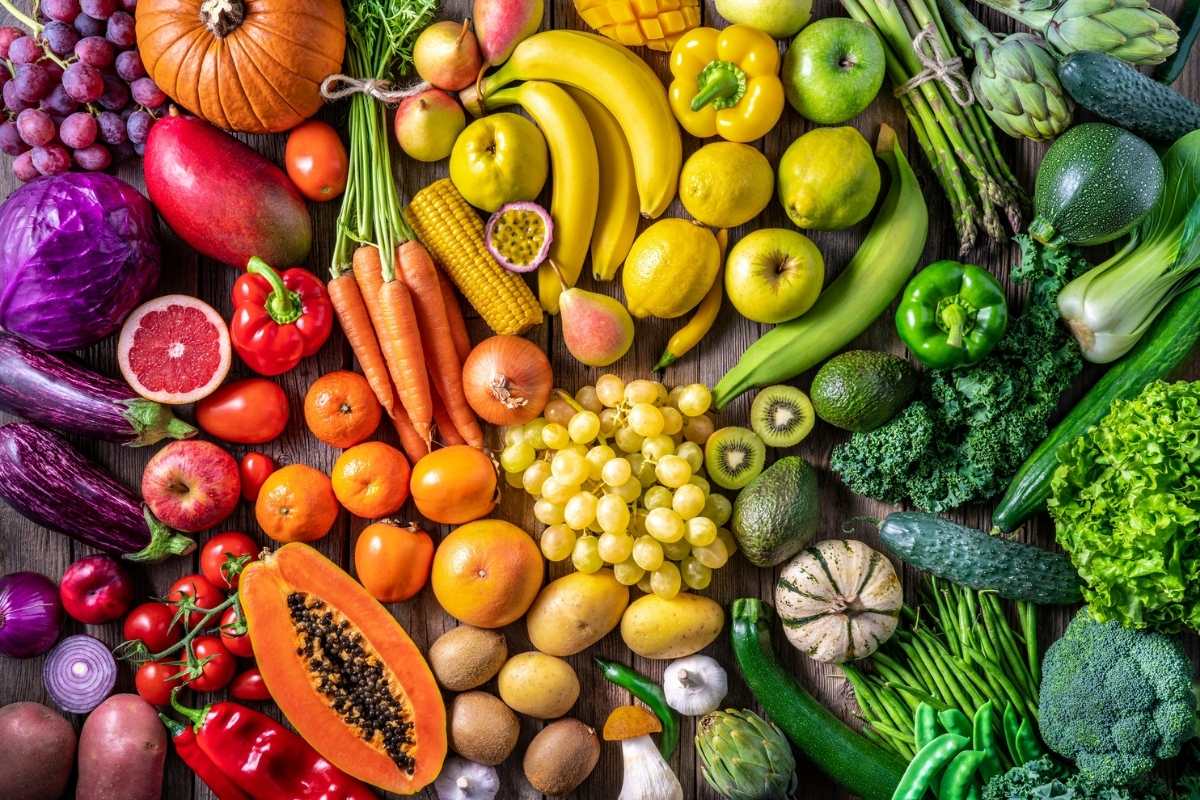
‘Eating the rainbow’ is an easy – and delicious – way to get more health benefits from your diet. An HBF dietitian explains why and how.
Bright, colourful and full of natural goodness, fruits and vegetables are an essential part of a healthy diet.
To get a good mix of vitamins and minerals that support your health, it’s important to eat a variety of different fruits and vegetables each day.1
One simple way to do this is to focus on getting a variety of colours on your plate and aim to ‘eat the rainbow.’
Here, HBF dietitian Mary du Heaume shares some easy tips.
In this article
Why are fruits and vegetables so good for you?
“Fruits and vegetables contain lots of vitamins and minerals that are good for your health – such as vitamins A, C and E, magnesium, zinc, phosphorus and folic acid,” du Heaume says.
“They’re also a good source of fibre, which helps keep you feeling full and energised and is good for your digestion and gut health.”
Research shows that eating a balanced diet high in fruit and vegetables – along with a healthy, active lifestyle – can help you to:1
- Achieve and maintain a healthy weight
- Lower your cholesterol
- Lower your blood pressure
- Reduce your risk of health conditions like diabetes, heart disease and stroke, and some forms of cancer later in life.
How many fruits and vegetables should I eat each day?
The Australian Dietary Guidelines recommend eating at least:
- Five serves of vegetables (one serve = about 1 cup of raw salad vegetables or ½ a cup of cooked vegetables)2
- Two serves of fruit (one serve = one medium fruit like an apple or banana, two small fruits like apricots or kiwis, or 1 cup of diced fruit)3
Why do the colours of fruits and vegetables matter?
The vibrant colours of fruits and vegetables come from their phytochemicals.4
“Phytochemicals are plant chemicals that give fruits and vegetables their colour and flavour and provide us with health benefits that may help protect us from disease,” du Heaume says.
“Fruits and vegetables of similar colours tend to have similar phytochemicals and nutrient profiles.
“That’s why eating a variety of colours is important to make sure you get a good mix of health benefits.”
To get a variety of nutrients, try to regularly eat from different colour groups:
- Greens like broccoli, spinach, kale, zucchini, cucumber, green grapes, kiwis, green apples and pears.
- Reds and pinks like strawberries, raspberries, watermelon, red apples, tomatoes, red capsicum and radishes.
- Oranges and yellows like carrots, sweet potatoes, pumpkins, corn, yellow and orange capsicum, oranges, lemons, peaches and apricots.
- Purples and blues like blueberries, blackberries, plums, eggplant, purple cabbage and radicchio.
- Whites like cauliflower, garlic, mushrooms, onions, potatoes and bananas.
Easy ways to eat more fruit and vegetables
So how can you eat more fruit and vegetables in your day?
du Heaume shares a few simple ideas:
- Fill half your plate with veggies. This is a good habit to help you get your five serves.
- Get creative with salads. Think beyond lettuce leaves – experiment with colourful combinations of fresh and roasted veggies and add legumes, nuts and seeds, avocado, grains and even fruits.
- Meal prep. Chop up some veggies in advance and store them in the fridge, so it’s easy to toss them in when you cook next. Make a big fruit salad and portion it up for delicious snacks and desserts.
- Add extra chopped veggies to your favourite recipes like pasta sauces, curries and stir fries.
- Make a big batch of soup with vegetables as the heroes and freeze portions for easy meals. It’s a great way to use up leftover veggies.
- Take fruit with you when you go out, so you always have a healthy snack on hand when you need an energy boost.
- Snack on veggie sticks like carrot, capsicum, celery and cucumber – perhaps with a homemade hummus.
- Add fruit or veggies to your breakfast. Have fruit with muesli or yoghurt, whip up a vegetable omelette, or make a breakfast egg sandwich with tomato and leafy greens.
- Keep frozen fruit and veggies in the freezer. That way you’ll always have healthy options on hand to toss into quick and easy meals.
- Enjoy fruit for dessert. Get your sweet fix with fruit salad, berries and yoghurt or apple slices dusted with cinnamon.
- Plan a few vegetarian meals into your week. Get creative and discover plant-based recipes you love.
- Shift the focus and make the vegetables the star of your meal and add meat as the accent.
- Pump up the flavour by adding different herbs and spices, dressings and sauces. Vegetables can shine when given the chance.
How can health insurance help?
- Nutrition and dietetics. HBF extras cover can pay benefits towards visits with a nutritionist or dietitian, who can give you healthy eating advice to support your health and wellbeing goals.
If you’re an HBF member, you can check what you're covered for by logging on to myHBF or calling us on 133 423.
Diet and nutrition cover with HBF
With benefits for dietitian and nutritionist visits, HBF extras cover can help you feel your best.
Find out more
Disclaimer:
This article contains general information only and does not take into account the health, personal situation or needs of any person. In conjunction with your GP or treating health care professional, please consider whether the information is suitable for you and your personal circumstances.